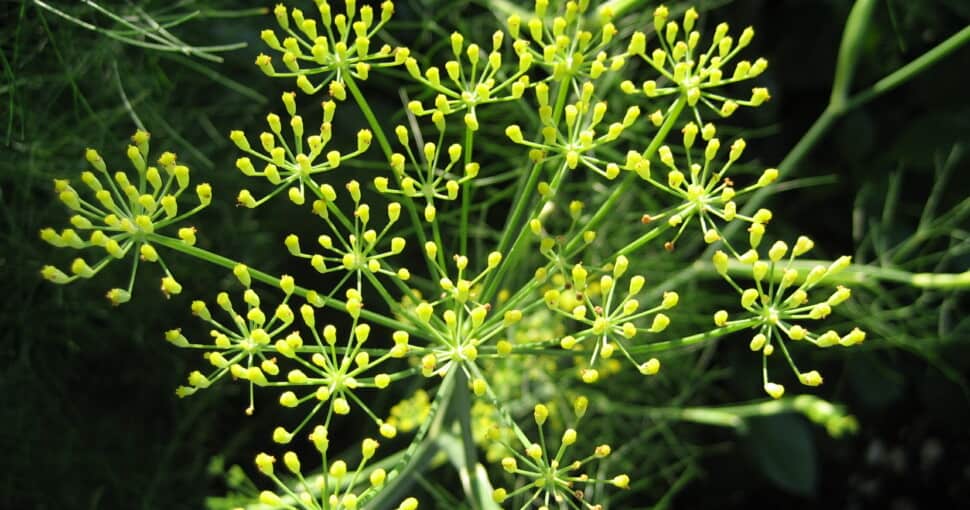Fennel (Foeniculum vulgare) is an edible plant with delicate, feathery green leaves and large white bulbs. Fennel can reach up to 6 feet but commonly grows a bit smaller. In milder climates, fennel may survive over winter and produce small, yellow flowers on umbels in its second season.
Contents
The long, brown seeds will form from these umbels, which can be used to plant new fennel plants next season. The entire plant is edible and has a similar flavor to licorice. Fennel bulbs are often used in cooking and are one of the reasons why people keep these plants.
Despite its recognizable appearance and scent (like anise), other plants easily mistaken for fennel may not be safe to eat. These fennel lookalikes include:
- Wild Fennel – looks precisely like garden fennel
- Dill – the fronds look the same
- Aniseed – the fronds look the same, and the plant has a similar scent
- Chervil – has the same scent as fennel
- Licorice basil – has the same color and scent as fennel
- Poison hemlock – the entire plant and flowers look like fennel
- Parsley – the leaves look like fennel
- Carrots – the leaves on the carrot tops resemble fennel
If you’ve noticed some fennel-looking plants in your garden, you should be sure they are indeed fennel before attempting to cook with them. So, consider the following list and description to understand the similarities and differences between fennel and lookalikes.
1. Wild Fennel (Foeniculum vulgare)
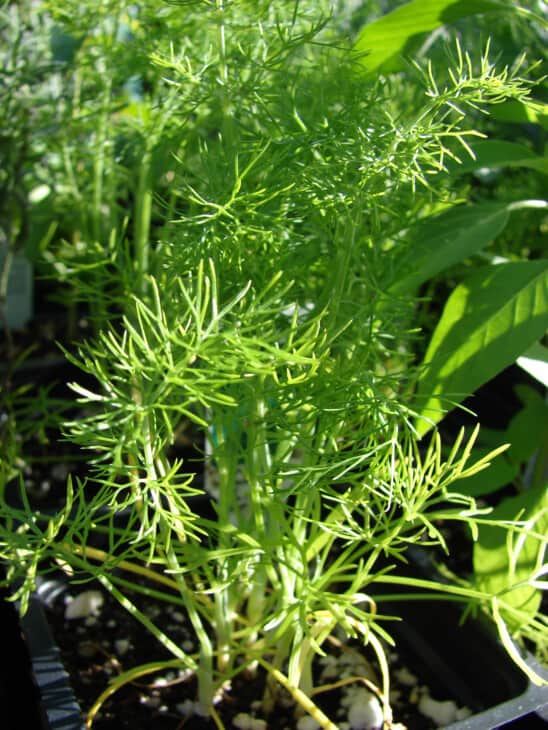
One might come across a plant that looks exactly like the fennel found in a garden and wonder what it is. Well, in the right location, it might be wild fennel. Wild fennel is the same species found in gardens; these plants look exactly the same.
There are slight differences between wild fennel and domesticated fennel, though, since the domesticated variety has seen some genetic changes to enhance its culinary uses. Domesticated fennel has a larger bulb since this is the part used for cooking. Wild fennel, however, has a stronger licorice scent and flavor.
Wild fennel seeds are slightly smaller than domesticated ones, but you can harvest these seeds to grow them in your garden.
Like its domesticated sibling, wild fennel is edible. You can harvest the fronds and bulbs and use them in cooking once you have established which plant you are dealing with.
2. Dill (Anethum graveolens)
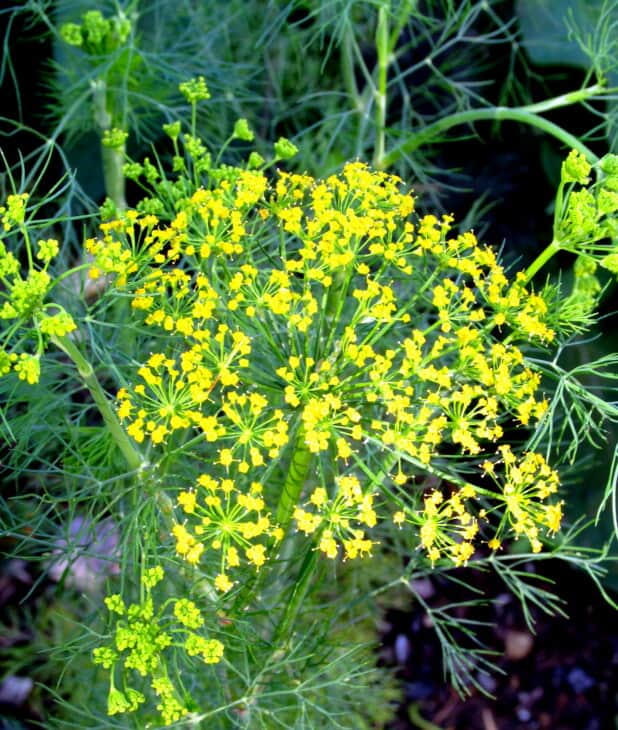
Dill plants also look almost identical to fennel plants. Dill grows 3 or 4 feet high, making it the same size as most fennel plants. Dill also has the signature aniseed scent produced by fennel and has the same delicate grassy leaves as fennel.
Dill also produces small yellow flowers that grow on umbels, making it extremely easy to mistake this plant for fennel. However, upon closer inspection, you may notice that the branches of a dill plant have a faint white outline, something fennel plants don’t have.
The foliage on a dill plant also grows more sparsely than that of a fennel plant, which is how you can tell the two apart when growing side-by-side. Dill, like fennel, is edible. This means that the mistake of grabbing dill instead of fennel won’t cost you.
Related: 6 Plants That Look Like Dill
3. Aniseed (Pimpinella anisum)
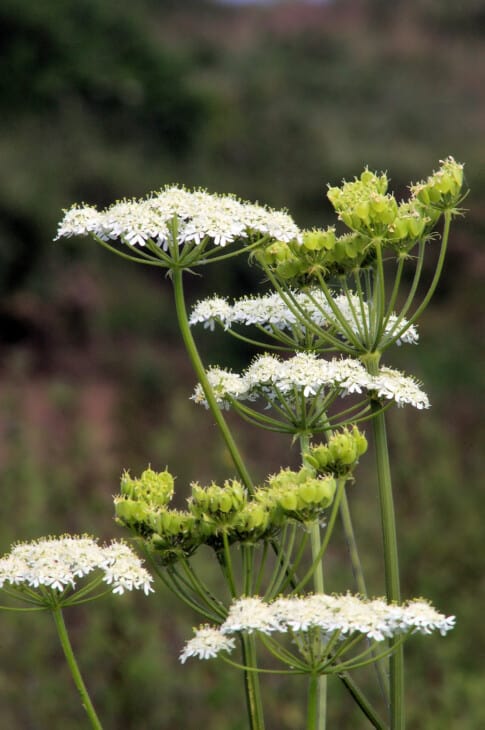
Aniseed, or anise, is another fennel lookalike. This plant produces the same grassy leaves as fennel, giving off the same licorice scent when you touch them. Aniseed also grows about 4 feet high, making it an identical match to fennel.
The primary way to distinguish between anise and fennel is to monitor the flowers and seeds. Fennel produces tiny, yellow flowers. On the contrary, anise flowers also grow on umbels, but they are white. When the seeds form, you’ll see that anise seeds are darker than fennel seeds and have a stronger scent.
Like fennel, all parts of the aniseed plant are edible. However, while fennel is grown for bulbs, aniseed is cultivated for its seeds. The seeds are much sweeter and more flavorful than fennel seeds.
4. Chervil (Anthriscus cerefolium)
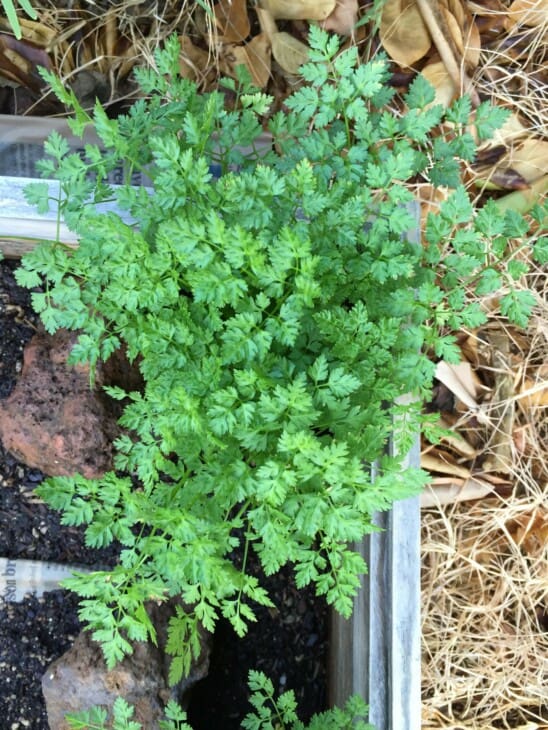
Chervil, also known as French parsley, is another plant usually connected to fennel. Chervil doesn’t look too much like fennel. But since both plants are part of the parsley family, there are some similarities. Both plants have the same color leaves. The leaves are fine and dainty, almost like lace.
Chervil plants also have a faint licorice scent and flavor, which reminds one of fennel. Still, the flavor is much more subtle than that of fennel. Chervil is also much smaller than fennel, growing only about 24 inches tall. Like fennel, chervil is edible and often used in the kitchen for its mild, licorice flavor.
5. Liquorice Basil (Ocimum basilicum)
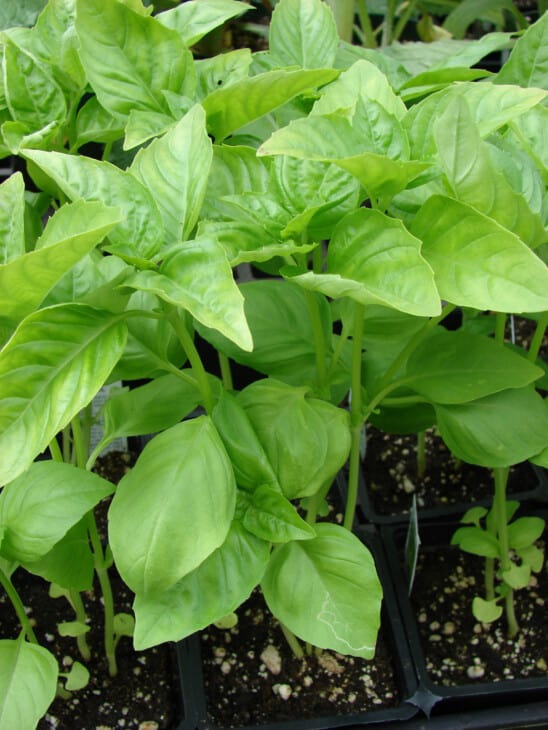
Another plant one might not expect to have similarities with fennel is licorice basil. Licorice basil grows about 24 inches tall and is also known as Thai basil. Licorice basil has broad, dark brown leaves, which is one way you can tell it apart from fennel.
Licorice basil also produces purple flowers that grow in cone-shaped bunches, a clear difference from the yellow umbels found on fennel. Still, licorice basil smells of licorice when you brush against it, which might make you think there is a fennel plant nearby.
Licorice fennel is edible and often used for cooking. It has a milder flavor and scent than fennel but gives you the same aromatics.
6. Poison Hemlock (Conium maculatum)
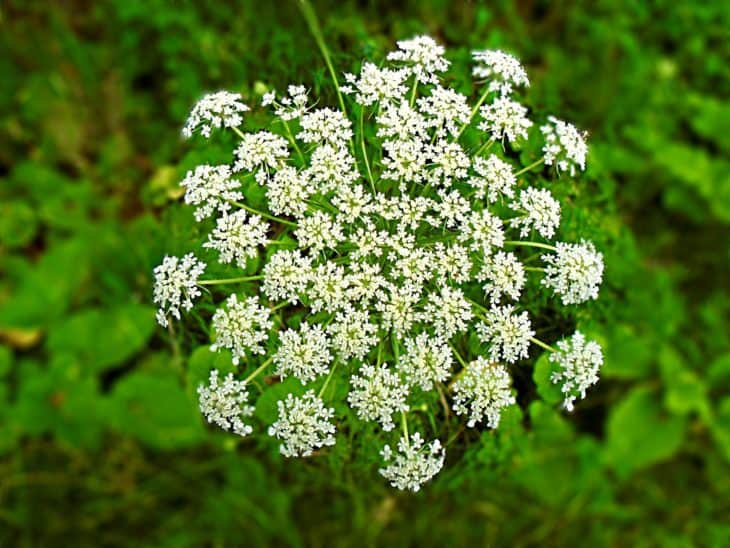
Poison hemlock may also trick you into believing that it is fennel. Poison hemlock has the same delicate, grassy leaves as fennel and grows about 4 to 6 feet tall. The flowers and seeds also grow on umbels, which you may only sometimes see, depending on the season.
These two plants look remarkably similar, but because of the toxicity of poison hemlock (just a few seeds can kill an adult), you must ensure you are looking at the correct plant. Poison hemlock has purple blotches on its stems, with is not something you will see on fennel.
Poison hemlock also produces white flowers, whereas fennel flowers are yellow. Finally, poison hemlock does not have the signature licorice smell you will detect when rubbing against a fennel bush.
7. Carrots (Daucus carota)
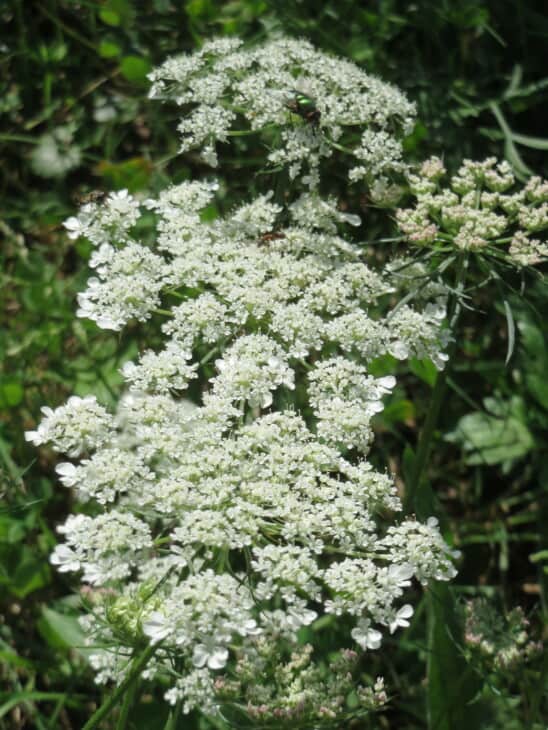
Carrots are cultivated for their bright orange roots, but their leaves and stems look remarkably similar to fennel. The leaves are the same green as fennel leaves and look like a mixture between parsley and fennel. The stems also look like fennel stems.
Carrots are edible, as you may well know. While the leaves and stems are often discarded, they, too, can be used in the kitchen. While carrot leaves may resemble fennel, they don’t have the same scent or taste.
8. Parsley (Petroselinum crispum)
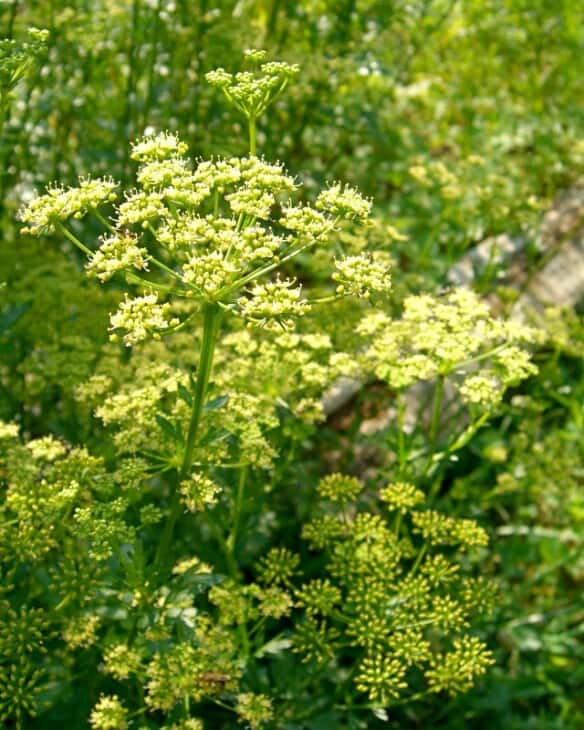
Parsley also has some similarities to fennel. This is to be expected since fennel and parsley are from the same family. Though you won’t really mistake these two plants for each other, their fine, lacelike leaves share some resemblance. Parsley leaves are bigger and flatter, though. They are also a darker color.
Parsley plants are also relatively smaller than fennel, growing only about 12 inches tall. Another difference between the two plants is that parsley lacks the licorice scent and flavor of fennel. Even though these two plants have few similarities, you may detect a faint resemblance in their “essence.”
Parsley is also edible and one of the most popular herbs in the kitchen. Like fennel, all parts of the plant are edible, though the leaves are the most prized part of this plant.

